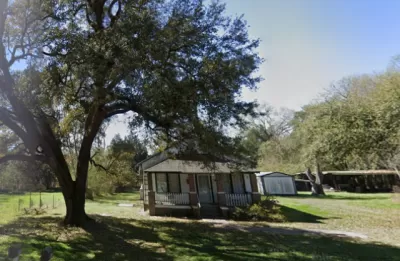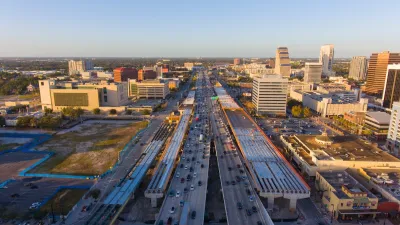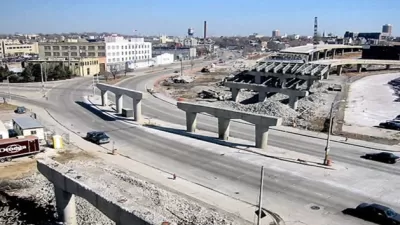Residents of a historic Black South Carolina town are being displaced by a road widening project.

Residents of Sandridge, South Carolina are being displaced by a road-building project, reports Sarah Sax in The Guardian. The project highlights the continuing impact of infrastructure projects on primarily Black and brown communities.
As Sax explains, “In January this year, the South Carolina chapter of the NAACP filed a Title VI complaint alleging that the state and the county violated the civil rights of Black residents in the design, planning and implementation of the Conway Perimeter Road.” The road project “would span four lanes and connect two existing highways and allegedly cut travel time for those headed to the nearby beach – and it would also mean destroying at least six homes in Sandridge.” The project would also cut through the community, making it harder for residents to pass from one side to the other.
Despite federal commitments to ‘reconnecting communities,’ projects like the Conway Perimeter Road are still being planned and implemented around the country, harming communities like Sandridge, where “Residents are mostly Black and elderly, and many are related to each other. It has historic value: one of the first Black-owned grocery stores in the state was opened in Sandridge.” One resident who was offered relocation compensation said the money for her three-bedroom home was just enough to cover a one-bedroom apartment nearby.
FULL STORY: Why is South Carolina still building roads on top of Black communities?

Manufactured Crisis: Losing the Nation’s Largest Source of Unsubsidized Affordable Housing
Manufactured housing communities have long been an affordable housing option for millions of people living in the U.S., but that affordability is disappearing rapidly. How did we get here?

Americans May Be Stuck — But Why?
Americans are moving a lot less than they once did, and that is a problem. While Yoni Applebaum, in his highly-publicized article Stuck, gets the reasons badly wrong, it's still important to ask: why are we moving so much less than before?

Using Old Oil and Gas Wells for Green Energy Storage
Penn State researchers have found that repurposing abandoned oil and gas wells for geothermal-assisted compressed-air energy storage can boost efficiency, reduce environmental risks, and support clean energy and job transitions.

Minneapolis Bans Rent-Setting Software
Four cities have enacted restrictions on algorithmic software that can inflate rent costs.

Oakland to Add 244 New EV Chargers
Oakland plans to launch its new charging network at eight locations by the end of 2025.

Jane Goodall Inspires with Message of Hope, Resilience, and Environmental Action
Speaking in Pasadena, Jane Goodall offered a hopeful and inspirational message, urging global compassion, environmental responsibility, and the power of individual action to shape a better future.
Urban Design for Planners 1: Software Tools
This six-course series explores essential urban design concepts using open source software and equips planners with the tools they need to participate fully in the urban design process.
Planning for Universal Design
Learn the tools for implementing Universal Design in planning regulations.
Heyer Gruel & Associates PA
City of Moreno Valley
Institute for Housing and Urban Development Studies (IHS)
City of Grandview
Harvard GSD Executive Education
Salt Lake City
NYU Wagner Graduate School of Public Service
City of Cambridge, Maryland





























